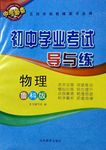ABCDA CDABB ADACA ABADA
本文论述的是:喝绿茶可以减缓老年人的精神抑郁症。在做本完形填空题的时候,需要同学们结合自己知道的有关绿茶的常识及联系文章的上下文之间的语意来确定答案。
1. A 此题考查动词词义的简单辨析。这一句的意思:某些研究把喝绿茶跟缓解精神问题联系起来,我们得知用A项:link…to…, 把……和……联系起来,其他三项依次分别表示:带走,考虑,认为,都无此意。
2. B 此题的解题关键是得知道aged是个形容词,意思是:……岁的,而其他的三项均无此意。最容易错选的是years和age,然而此两个词的正确用法是:70 years old和at the age of 70,aging本身就是个错误,故选择B项。
3. C 解此题的关键是得联系上下文的逻辑关系。文章的第一句就说:老年人喝绿茶可以少有可能患抑郁症。此时也是这个意思,只不过多了个44%,more表示的意思刚好相反,又得用比较级,然而little和much是原级,所以选择C项:比较少。
4. D 这个题得结合常识和把握文章的话题。文章说的是:老龄人喝绿茶。这里的“喝”,就说consume:消耗,消费。ABC项依次的意思是:卖(sold是sell的过去式),种植,传播,故我们选择D项。
5. A 考查的是近义词和形状相近的词的辨析。Include:包括(整体),contain:包含(元素),又因为中国和日本都属于亚洲,再者,其逻辑主语是countries,和include这个动词之间是主动关系,conclude:得出结论;consider:考虑,故选用including
6. C 这一空的考查的动词词义的辨析。结合上下文我们得知:Niu和他的同事在大学里作研究,要研究就得调查,也就是investigate,而别的三项的语意分别是:寻找,核对,问,都就显得不合适了。
7. D 考查名词词义的准确记忆。全文讲述的都是老年人喝绿茶可以少患抑郁症。ABC项的含义分别是:乐观,高兴,辛酸。这儿的D项意思是:depression,抑郁。故D为正确答案。
8. A 检测联系上下文的能力。the American Journal of Clinical Nutrition明显是一份杂志,当然这项研究要“刊登(published)”在杂志上,也就是选择A项,而不是BC两项,这是因为他们就没有被动语态这样的用法,come out的用法是:sth.come out:……出版了。appear的用法跟它相似。而D项的show表示意思是:展示,逻辑上页也不合适。
9. B 此题考查动词词义的辨析。茶当然是用来喝的,也即是:drink,它的过去式就是drank。而不是ACD项分别表达得“吃,吞,嚼”之意。
10.B 此题考查的是喝茶的常识,当然是“每天”(daily)喝两到三杯茶,不可能“每周(weekly),每月(monthly),每年(yearly)”才喝三杯茶。故B项正确。
11.A 考查形容词词义的辨析。从文章前面的论述我们得知:老年人喝绿茶可以少患抑郁症,并且可也大幅度的降低几率,这个效果当然很明显,也即是:apparent,而不是BCD项分别依次所表示含义:轻微的,巨大的,温柔的。
12.D 考查上下文逻辑关系的照应。文章的开头第一句就说是绿茶:green tea,也就是D项,而不是红茶(black tea)和乌龙茶(oolong tea),更不是什么咖啡(coffee)
13.A 这一题的关键是厘清这一段的逻辑关系和语意:在这些研究人员看来,在他们把各种社会、经济地位、性别、饮食、各种患病史和使用抗抑郁症药等等考虑进来之后,喝绿茶有减缓精神压抑的明显作用也很明显,也就是没有消退:fade,暗淡,褪色,消退。BCD项表示的意思不合适:disappear(消失),run(跑),decease(死亡)。
14.C 检测名词词义的准确记忆和上下文语言逻辑之间的照应。由上一题的分析我们得知,此空需填上表示使用之意的词语,C项use就是这个意思;ABD三项表示的意思依次分别是:影响,作用,结果,在语言逻辑上都不合适。
15.A检测名词词义的准确记忆和上下文语言逻辑的照应。这一段是拿绿茶和红茶还有咖啡相比较,意思是说:喝红茶或者咖啡与抑郁症的症状有所降低之间没有联系,也就是:association,联系。BCD项的意思分别是:使用,比较,不同,语言逻辑上都不合适。故A项为正确答案。
16.A检测动词词义的准确记忆和上下文语言逻辑的照应。由上一题的分析,我们知道此处要填上表示“减少”或者“降低”之意的动词,也就是lower,其余BCD三项的意思分别依次是:增加,加强,导致。无论意思上还是逻辑上都不合适。故选择A项。
17.B 考查近义词的辨析。我们可以从这些词的基本意思结合这一段的语境来确定答案。语境是:Niu指明说,他认为对大脑有着镇静作用的硫胺素可以解释在这项研究里表明的这种潜在的有益的影响。又补充说,还有必要再作研究。因为是做研究,所以不能是假想(assume)和想象(image)。而hope根本就没有这样的用法。
18.A检测名词词义的准确记忆和上下文语言逻辑的照应。由上一题的分析我们知道此题要填上表示“影响”之意的名词,也就是effect,而不是CD三项依次表示的意思:努力,结果,B项的affect(影响)是个动词。而不是名词;又因为have an/a…..effect on是固定的搭配,故选A项。解这个题的关键是单词的准确记忆,包括它们的词形、词性和词义。
19.D考查的是动词的词义的辨析,由上一题所分析的语境得知此空要表达的意思是:硫胺素可以说明这种潜在的有益影响。这四个词中只有explain有解释说明之意,其余ABC三项表达的意思依次分别是:报道,证实,完成;无论是意思还是逻辑上都不照应,故D项为正确答案。
20.A考查近义词的含义和辨析。有上下文的语境我们得知:Niu前面已经说了一句,现在是“接着说”,也就是adding。B项的意思:致辞,演说;C项的意思:说(语言);D项的迷惑性最大,但是它的意思是:说(言语)。故选择A项:接着说。



 初中学业考试导与练系列答案
初中学业考试导与练系列答案